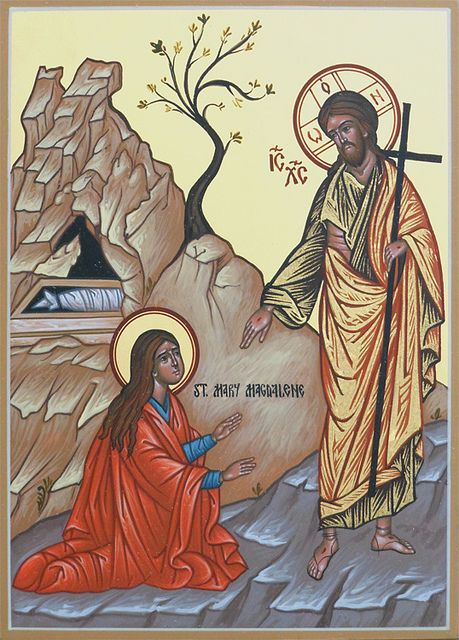This evening, please read the Resurrection narrative given to us in Matthew 28. I have attached the excerpt concerning the gospel of Matthew from N. T. Wright’s The Resurrection of the Son of God if you wish to dive deeper into the text.
Although 97% of Mark’s gospel text is found in Matthew, Matthew will rework Mark in his retelling of the Resurrection. Like Mark, only the women are witnesses to the empty tomb. Mark, however, tells us that the women were coming to anoint a dead body and wondering how to move the stone, in Matthew they are just coming to observe. Matthew gives us a sense that the women are uncertain as to whether the tomb will be empty or not.
In Mark, the women find an empty tomb and a young man who speaks to them. There are no guards or cosmic events. The women are left with brief instructions and feelings of amazement, trembling, astonishment, and fear. Matthew begins with apocalyptic fireworks. (vv.1-4). Picture the scene. It’s the first day of the week. There is the stillness and the quiet of the early morning as the women come upon the still sealed tomb. Then, Bang! A great Earthquake! An Angel descends like Lightning! It’s God (re)speaking “Light!” from the first First Day. The activity causes the stone to roll away and the guards to go catatonic. The angel (as angels are wont to do in Scripture, except in Mark) says “do not be afraid.” The women depart, not only with fear but also with great joy. Matthew has a different perspective on that Sunday morning.
At the end of the scene at the tomb, Jesus appears to women. (vv.9-10). He appears to these women first before appearing to the eleven remaining disciples. They recognize him and immediately worship him. And then he sends them on their way to the Eleven.
Matthew’s resurrection story ends with the Eleven disciples (the original Twelve minus Judas) meeting Jesus in Galilee on the mountain and receiving the charge of the Great Commission. Matthew tells us that “when they saw him they (all?) worshipped him, but some doubted.” In John, Thomas doubted because he had not seen, but when he does see the Risen Christ he exclaims “My Lord and my God!” (John 20:28). But in Matthew seeing (and even worshipping) isn’t believing. Matthew never tells us who doubted, why they doubted, or even what they doubted, he simply tells us that some (more than one) doubted despite the appearance to them. Maybe the idea of the Resurrection was still too much and too soon to comprehend, maybe Jesus was in a sufficiently different form that the appearance makes no difference, maybe Matthew himself was a doubter, but we do not know. What Matthew does tell us is that even those who did doubt were nonetheless given the Great Commission to go and make disciples of all nations and baptizing them. Doubt does not appear to be an impediment to the commissioning and certainty does not appear to a requirement of an apostle.
A faith without some doubts is like a human body without any antibodies in it. People who blithely go through life too busy or indifferent to ask hard questions about why they believe as they do will find themselves defenseless against either the experience of tragedy or the probing questions of a smart skeptic. A person’s faith can collapse almost overnight if she has failed over the years to listen patiently to her own doubts, which should only be discarded after long reflection.
Tim Keller, The Reason for God.

